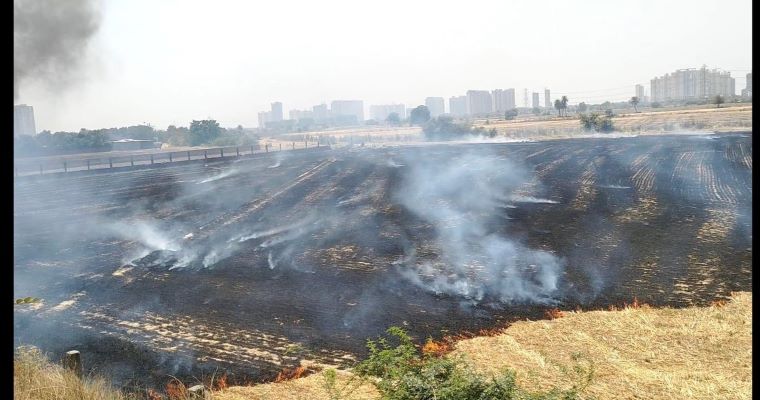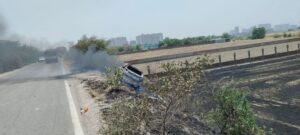Crop residue burning assumes alarming proportions in Greater Noida

Team L&M
While the Agriculture Department sleeps over, Greater Noida is witnessing several cases of crop residue burning. The latest incident is reported from village Chuhadpur village, klocated near the Zero point of Yamuna Expressway, where some farmers have indulged in crop residue burning, which also led to an unfortunate car accident. Prior to this, several incidents of crop residue burning were reported from Dadri tehsil and Safipur Pari Chowk village in Greater Noida. And with this the AQI in Noida – Greater Noida has crossed 300 mark.
“The agriculture and pollution departments must take some action and put an end to this criminal act,” says environmentalist Vikrant Tongad who is also a resident of Greater Noida.
According to a 2014 study by the Indian Agricultural Research Institute (IARI), in 2008-09 the country generated 620 million tonnes of crop residue, of which close to 16 per cent was burnt on farms. Of this, 60 per cent was paddy straw, and 22 per cent was wheat.
What’s worrisome is crop residue burning releases many toxic gases like carbon dioxide, carbon monoxide, oxides of sulphur, besides particulate matter and black carbon into the air, all of which directly contributes to environmental pollution, leading to more and more cases of respiratory tract diseases.
What’s more, burning of crop residue kills other micro-organisms present in the upper layer of the soil as well as destroys its organic quality, making crops more prone to disease. This also reduces the solubility capacity of the upper layers of soil. Also, as the heat penetrates into the soil, it elevates its temperature which kills the friendly bacterial and fungi critical for soil fertility.
According to a report, one tonne stubble burning leads to a loss of 5.5 kilogram nitrogen, 2.3 kg phosphorus, 25 kg potassium and more than 1 kg of sulfur — all soil nutrients, besides organic carbon.
Sadly, crop residue burning is not a problem of Gautam Budh Nagar alone. It is rampant in almost all farming areas, wherein in absence of suitable alternatives farmers resort to burn the crop residue to sow seeds of the next crop. What happens in Delhi around the month of November every year is widely known to all the denizens of Delhi-NCR.
Significantly, burning crop residue is a crime under Section 188 of the IPC and under the Air and Pollution Control Act of 1981. One wonders why the governments are not interested in implementing this law, and penalises those who flout it so brazenly.



